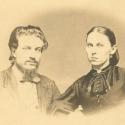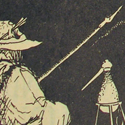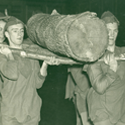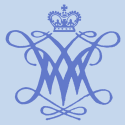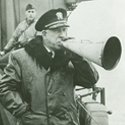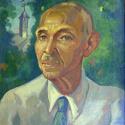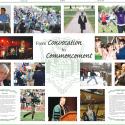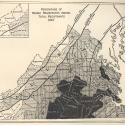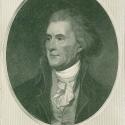At the beginning of the Civil War, medicine was at a crossroads. Researchers were only beginning to recognize the role of microorganisms in causing disease and the importance of antiseptic conditions in surgery. There were many competing theories of medicine in 1861, but a majority of doctors practiced medicine based on the centuries-old “four humors” theory. This theory held that keeping the body’s four humors—black bile, yellow bile, phlegm, and blood—in proper balance was the key to good health. Doctors kept the humors in balance by bloodletting or administering purgatives or emetics to their sick patients.
Past Exhibits
-
October 28, 2011 to April 9, 2012
-
December 6, 2011 to April 6, 2012
The diversity of the College of William & Mary community finds expression in a vari
-
December 9, 2011 to March 30, 2012
The yearly occurrence of Christmas invites celebrations to maintain a sense of tradition and nostalgia. Steeped in the Colonial Revival atmosphere of Williamsburg in the 1930s with the reconstruction of historic buildings on campus and Duke of Gloucester Street, the Yuletide season featured events with traditional inspirations.
-
October 13, 2011 to March 27, 2012
This exhibit is part of a continuing series about the presidents of William & Mary. It provides a history of the university as seen through the eyes of its presidents. The first exhibit spans the administrations of presidents James Blair, William Dawson, William Stith, and Thomas Dawson.
-
October 18, 2011 to March 12, 2012
When we think of archival collections, we imagine primarily written documentation, be it letters, diaries, or organizational records. But artifacts are sometimes part of those collections and some of those objects tell a story that can enrich and at times may even go beyond the written word. The weapons, ammunition, and equipment of war shown in these three cases were used by soldiers in the Civil War, World War I, and World War II. In addition to arms and ammunition, there are also trench lighters, breastplates, and helmets. This exhibit is by no means attempting to be a comprehensive history of any of these wars, but uses objects that played an important role in armed conflicts to give us an insight into one aspect in the daily life of the soldiers that owned and used them.
-
February 16, 2011 to February 27, 2012
The fifth in a series of library exhibits of W&M faculty publications has opened at Swem.
-
April 28, 2011 to December 4, 2011
“the Negro is a sort of seventh son, born with a veil, and gifted with second-sight in this American world,--a world which yields him no true self-consciousness, but only lets him see himself through the revelation of the other world. It is a peculiar sensation, this double-consciousness, this sense of always looking at one's self through the eyes of others, of measuring one's soul by the tape of a world that looks on in amused contempt and pity. One ever feels his twoness,--an American, a Negro; two warring souls, two thoughts, two unreconciled strivings; two warring ideals in one dark body, whose dogged strength alone keeps it from being torn asunder.”
-
May 5, 2011 to November 28, 2011
The first issue of The Flat Hat was printed on October 3, 1911.
-
March 16, 2011 to October 23, 2011
The end of the Civil War brought the passage of the Thirteenth and Fourteenth Amendments to the Constitution. Plessy v. Ferguson (1896) made “separate but equal” the law of the land. Materials in the exhibit show the racism prevalent in the United States and the legal decisions that began to chip away at the problem. Included are images of the Plessy v. Ferguson decision, segregated facilities, sub-standard classrooms and a copy of the Brown v. Board decision as well as letters found in Virginia politician’s papers in the Special Collections Research Center.
-
March 22, 2011 to October 11, 2011
This year marks the 250th Anniversary of Thomas Jefferson attending the College of William and Mary. In 1760, Jefferson set off from his rural estate in Albemarle County, Virginia to Williamsburg in order to further his education. After he graduated from William and Mary in 1762, Jefferson continued his education by studying the law for five years under George Wythe, lawyer and future professor of law at the College. Williamsburg helped to shape the mind of the future author of the Declaration of Independence and President of the United States of America. This exhibit contains letters, photographs, and other material documenting Williamsburg during the period Thomas Jefferson was a student there


